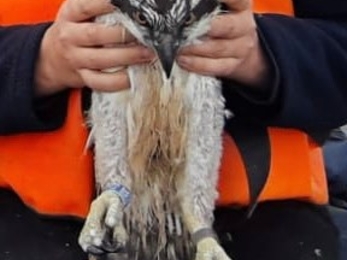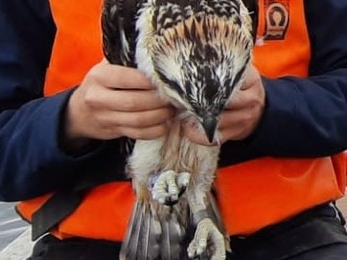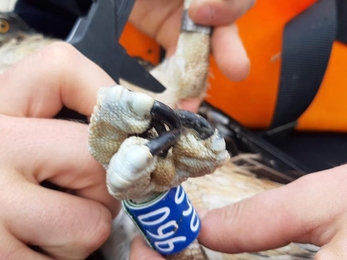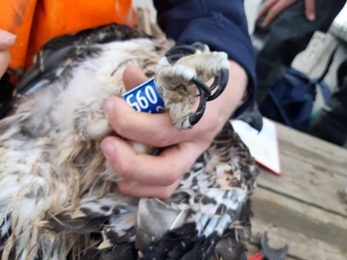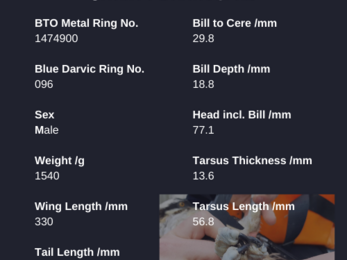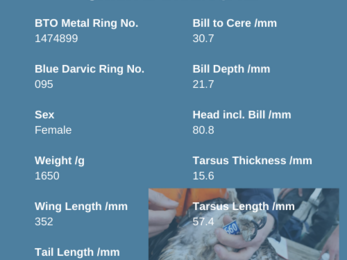All the Rutland Ospreys are fitted with leg rings when they are approximately six-weeks old, which is an optimum age as the chicks will have grown enough for the rings to fit. Ringing the birds allows us to gain a fascinating insight into individuals’ movements if they are observed elsewhere in the UK and abroad. Yesterday marked a very exciting day for us, as it was the time when a small team of us, led by a fully licenced ringer, would be heading out to ring the two nearly six-week old Osprey chicks from the Manton Bay nest.
Dawn is such a peaceful time of the day, and as we arrived on site we were immediately greeted by a Cuckoo calling away in the nearby hedgerow, and for me, like the Osprey, Cuckoos are one of the signs spring in the UK has really set in. But we soon disturbed the peaceful tranquillity of the morning, when Maya spotted us and began circling and displaying in the skies above us; the air ruptured with her alarm calls, as she attempted to warn us off, evidently aware of our presence and perhaps intent. After all, this would be the 10th time we have disturbed her to ring the chicks. 33(11) soon joined her and any remnants of calmness soon escaped. Well, for them at least. It is of course a special moment for us to just be immersed in the atmosphere and the moment.
(Make sure your sound is turned on for the video below)


